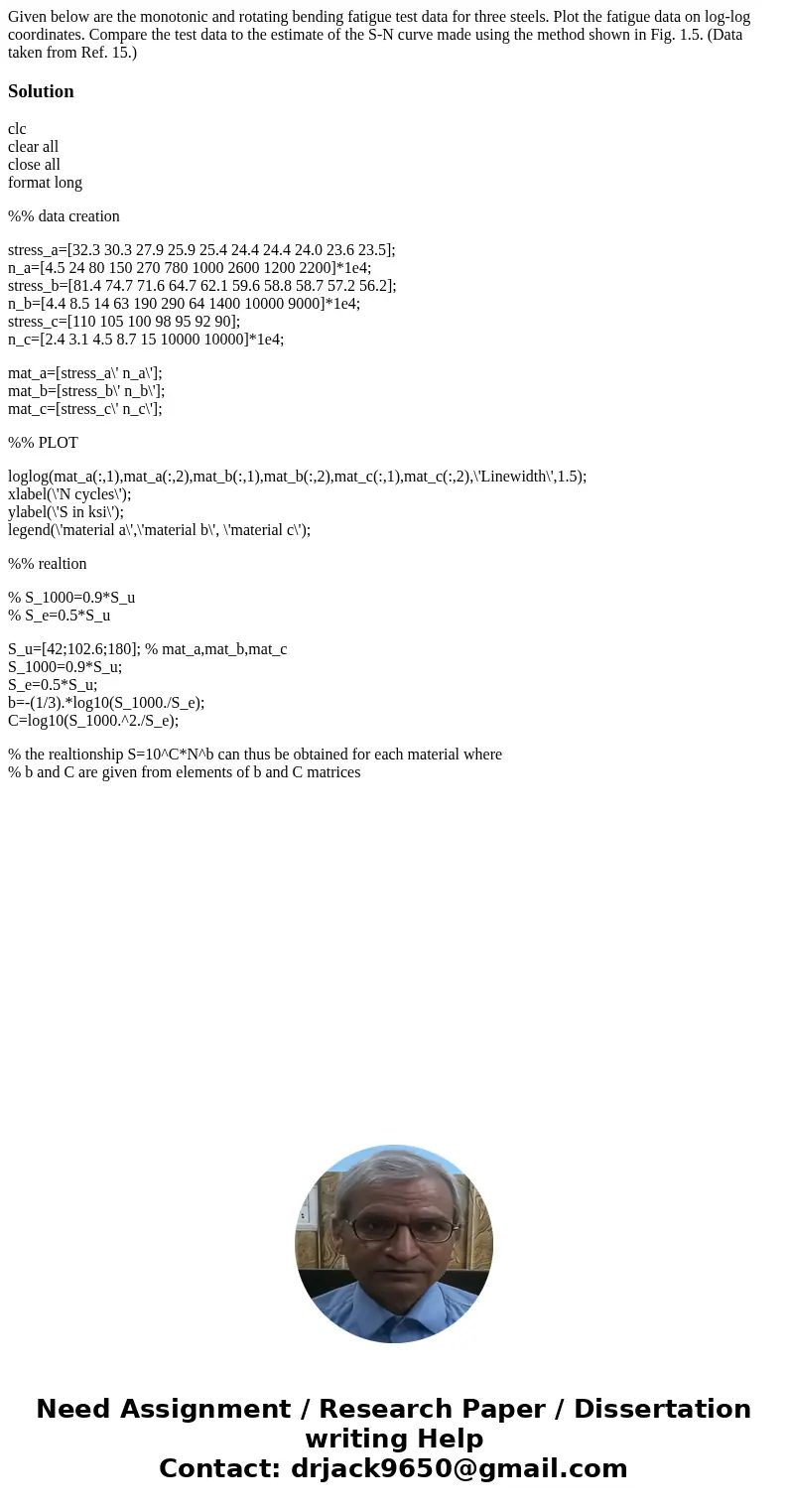Given below are the monotonic and rotating bending fatigue t
Solution
clc
clear all
close all
format long
%% data creation
stress_a=[32.3 30.3 27.9 25.9 25.4 24.4 24.4 24.0 23.6 23.5];
n_a=[4.5 24 80 150 270 780 1000 2600 1200 2200]*1e4;
stress_b=[81.4 74.7 71.6 64.7 62.1 59.6 58.8 58.7 57.2 56.2];
n_b=[4.4 8.5 14 63 190 290 64 1400 10000 9000]*1e4;
stress_c=[110 105 100 98 95 92 90];
n_c=[2.4 3.1 4.5 8.7 15 10000 10000]*1e4;
mat_a=[stress_a\' n_a\'];
mat_b=[stress_b\' n_b\'];
mat_c=[stress_c\' n_c\'];
%% PLOT
loglog(mat_a(:,1),mat_a(:,2),mat_b(:,1),mat_b(:,2),mat_c(:,1),mat_c(:,2),\'Linewidth\',1.5);
xlabel(\'N cycles\');
ylabel(\'S in ksi\');
legend(\'material a\',\'material b\', \'material c\');
%% realtion
% S_1000=0.9*S_u
% S_e=0.5*S_u
S_u=[42;102.6;180]; % mat_a,mat_b,mat_c
S_1000=0.9*S_u;
S_e=0.5*S_u;
b=-(1/3).*log10(S_1000./S_e);
C=log10(S_1000.^2./S_e);
% the realtionship S=10^C*N^b can thus be obtained for each material where
% b and C are given from elements of b and C matrices

 Homework Sourse
Homework Sourse